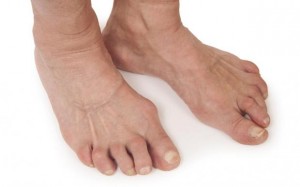 Peripheral Vascular Disease (PVD) describes a circulatory disturbance where narrowed arteries result in reduced blood flow to the body. While the limbs suffer much of the consequences, blood flow to vital body organs may also be compromised.
Because the feet and legs are the farthest regions away from the heart, PVD results in an inadequate blood supply for healthy function. A good blood supply is essential for tissue healing, repair and regeneration as blood is filled with nutrients and oxygen. This means that cuts and wounds take longer to heal and the risk of infection is increased. When infections do occur, they take longer to clear as immune cells travel in the blood.
Peripheral Vascular Disease (PVD) describes a circulatory disturbance where narrowed arteries result in reduced blood flow to the body. While the limbs suffer much of the consequences, blood flow to vital body organs may also be compromised.
Because the feet and legs are the farthest regions away from the heart, PVD results in an inadequate blood supply for healthy function. A good blood supply is essential for tissue healing, repair and regeneration as blood is filled with nutrients and oxygen. This means that cuts and wounds take longer to heal and the risk of infection is increased. When infections do occur, they take longer to clear as immune cells travel in the blood.
Symptoms to look out for
Symptoms of PVD can often begin in the lower limbs. These include:- Cramping, especially in the calves
- Pain or burning sensations
- Pale, cool skin
- Reduced hair growth
- Slower healing wounds
- Greater occurrence of infection








